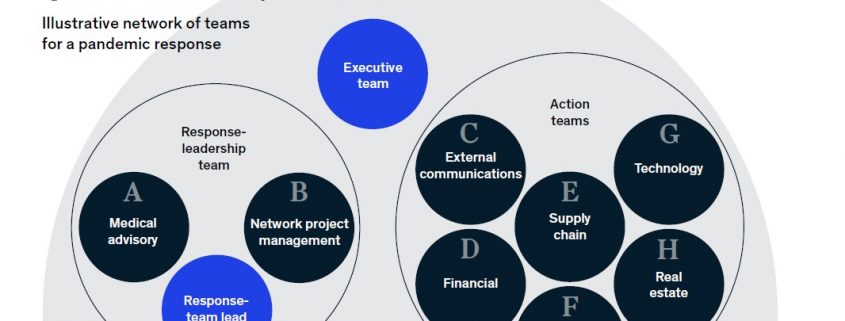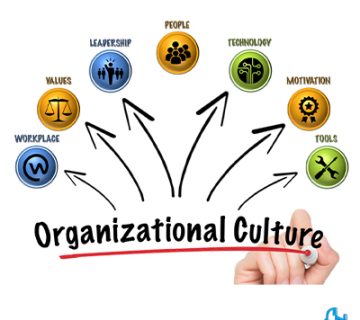
Introduction :
For many managers, the coronavirus pandemic is, unlike many recent events, a crisis. Five crisis leadership techniques can help you respond effectively to the coronavirus crisis.
The coronavirus pandemic has created extraordinary demands on leaders in their businesses and even beyond their businesses. The humanitarian casualties caused by the Corona virus have created fear among the organization’s personnel and other stakeholders. The wide scale of the disease outbreak and its unpredictability challenges managers in responding to this crisis. In fact, the outbreak of the disease has symptoms of the scale of the crisis perspective: An unexpected event or sequence of events on a large scale and with surprising speed that results in a very high degree of uncertainty leading to disorganization, a sense of loss of control, and extreme emotional turmoil.
The first thing that managers and business owners do is to accept that the organization is facing a crisis. This is a difficult step, especially when crises occur that do not come suddenly, but grow in natural and familiar conditions that cover nature and the environment around them. An example of this crisis is the SARS outbreak in 2002-2003 and now the coronavirus pandemic. Seeing a slowly developing crisis become what it might become requires leaders to overcome the bias of normality; which makes them underestimate the crisis and the effects that the crisis can have.
When leaders recognize and accept the existence of a crisis (as in the current situation), they can consider appropriate actions to deal with it. But they cannot react to it like the solutions they considered in normal crises and planned them in advance. Because the current situation is called crisis and expresses the concept of uncertainty and is different from the concept of risk. During a crisis, whose rules are based on uncertainty, it is effective to act largely improvised and based on the type of crisis.
The required programs may be a wide range of actions: Not just ad-hoc jobs (not just telecommuting and work-from-home policies), but settings for continuous and lean business practice (such as adopting new tools to help collaboration, which can even be maintained after a crisis) be useful for the organization.)
What leaders need in crisis situations is not a pre-defined response plan, but behaviors and mindsets that prevent them from overreacting to yesterday’s intended developments. It also helps them to look to the future.
In this article, we examine five behaviors and mindsets that can help leaders navigate the coronavirus pandemic and future crises.
Five behavior and thinking of leaders
During a crisis, leaders must abandon the notion that a top-down response creates stability. In routine emergencies, a typical organization can rely on its command and control structure to properly manage processes by preparing a simple written response (such as corrective actions). But in crises characterized by uncertainty, leaders face issues that are unfamiliar and difficult to understand. A small group of managers at the top of the organization cannot gather information or make decisions quickly enough to be effective. Leaders can mobilize their organizations by setting clear priorities for response as well as empowering others to identify and implement solutions that respond to the identified priorities and move forward in this direction.
Leaders can organize a network of teams to promote quick problem solving and their implementation in stressful and chaotic situations. Although network teams are widely known, it is still worth highlighting and pointing out, as very few organizations have experience in implementing even one of them. A network of teams consists of fully compatible groups that are united by a common goal and work in the same way that individuals in a single team work together. Some parts of the network perform actions that are outside of normal business processes. Other departments identify the consequences of the crisis for day-to-day business activities and implement the desired reforms. such as helping the organization’s personnel to adapt to the new work norms. In many cases, the network of teams will consist of an integrated nerve center that includes four areas: Labor protection, supply chain stabilization, customer participation and attraction, financial stress test.

A : Medical Advice
Guidelines and general policy
Guidelines for frontline managers
B : Network project management
scenarios
Map issuance
Operational skills
C : External communications
Regulation (for example, broadcasting, etc.).
Third party communications – for example, partners and… )
D : Financial
Financial stress test
E : supply chain
Disruption and support again (such as loans, etc.)
Exposure to layers
Inventory management
F : Development of cooperation
Communication through employee channels
Two-way feedback (survey, email, call, etc.)
G : Technology
Doing things from home and infrastructure
Support for special sections of employees (for example, those who cannot work from home)
H : Real estates
Management of buildings
factory management
Regardless of their functional scope, effective networks of teams exhibit different qualities. They are multidisciplinary: Experience shows that crises present a degree of complexity that requires the participation of specialists in different fields. They are designed to be implemented. Simply asking for expert ideas is not enough, experts must collect information, devise solutions, implement them and modify them as necessary. As the team learns more about the crisis and as conditions change, they can adapt, reorganize, expand, or adapt.
Leaders must foster collaboration and transparency within the network of teams. One of the ways to do this is to give the necessary authority to the personnel and share information, in other words it is to show how the teams should act on their own!!! In a crisis situation, a leader’s instinct may be to consolidate decision-making authority and control information. which basically requires knowing to provide it. Doing the opposite of these things will encourage the team to do the previous routine actions!!
Another important part of the responsibilities of the leader of any organization, especially in emotional and tense environments that show a crisis, is to promote the psychological security of the organization’s personnel so that they can openly discuss ideas, questions and Discuss concerns. This allows the network of teams to, through healthy debate; Understand the existing conditions and how to handle and improve them.
Elevating leaders during crisis leadership: Importance ٬Intentional calmness٬ And ٬Limited optimism٬
Just as senior managers must be prepared to temporarily transfer organizational responsibilities and authority hierarchically to a network of teams, they must also direct others toward the required aspects of crisis response. empower This includes giving them the authority to make decisions and implement decisions without the need for permission. One of the important roles of senior managers is to quickly design a decision-making process, so that responsibilities are clear and decisions are made by the right people at different organizational levels.
Senior leaders should also ensure that the right people are empowered with decision-making responsibilities in crisis teams. Since the decision makers in the organization are likely to make some mistakes, they must have a high ability to learn and make corrections without overreacting or crippling the organization. At the onset of a crisis, senior leaders must identify decision-makers to direct the required crisis response. But as the crisis evolves, new crisis response leaders will naturally emerge within the natural structure of established teams, and previous crisis response managers will not always be senior managers and will change.
In everyday and natural emergencies, perhaps the most important quality an organization leader has is experience. But in crises, on a long-term scale, the personality and character of management is the most important quality that the leader of the organization has. Leaders identified for crisis response must have the ability to unify teams behind a common goal and also generate questions for research. The best show different qualities. One of them is intentional calmness, the ability to detach from a chaotic situation and think clearly about how one can navigate the situation! Deliberate calmness is often found in beginners who are basically humble but not helpless.
Another important quality is limiting optimism, or self-confidence combined with realism. Early in a crisis, leaders can lose credibility if they show overconfidence in the face of clearly difficult circumstances. It is much more effective for leaders to ensure that a way is found for the organization despite difficult circumstances. But also show that he has identified the uncertainty of the crisis and is trying to deal with it by gathering more information. When the crisis is over, optimism will be more beneficial (and can be less limited).
Decision making in times of uncertainty: Pause to assess and anticipate, then act
Waiting for the full set of crisis factors to emerge before determining what to do is another mistake leaders make during a crisis. Since a crisis will result in many unknowns and surprises, the facts may not be clarified in the time frame necessary for decision making. But leaders should not rely on their intuition alone.
In practice, this means frequent stops in crisis management, assessing the situation from the perspective of different vantage points, anticipating possible future events, and then acting. The cycle of pause, evaluation, prediction and action must continue. Because it helps leaders maintain intentional calm and prevents managers from overreacting to new input. While some moments during a crisis will call for an immediate action without the need to assess and predict the situation, eventually leaders will take the time to pause, reflect, and think about the consequences before taking the next action.
Two types of cognitive behavior can help leaders during assessment and prediction. The first is called updating, which involves revising ideas based on new information from the teams and their developed knowledge. The second is skepticism, which helps leaders critically consider current and potential actions and decide whether they need to be modified, adopted, or dissolved.
Updating and skepticism help leaders mediate their motivations to imagine solutions based on what they’ve done before, and create new solutions without drawing on past lessons. Instead, leaders use their experiences to withstand new insights; as they appear; use.
When leaders decide what actions to take, they must act decisively. Visible assertiveness not only builds the organization’s trust in the leader, but also motivates the network of teams to continue their search for solutions to the challenges the organization faces.
Showing empathy: Dealing with the humanitarian disaster as the first priority
In a landscape-scale crisis, people’s minds turn first to their own survival and other basic needs. Will I get hurt or sick? how about my family So what will happen? Who cares about us? Leaders should not consider communication or legal issues to answer these questions. A crisis occurs when the most important thing for leaders is to maintain a fundamental aspect of their roles: Making a positive change in people’s lives.
The implementation of this issue requires the leaders to be fully aware of the personal and professional challenges of the organization’s employees and their loved ones that they face during the crisis. In mid-March 2020, COVID-19 created a great tragedy for families by claiming countless lives. More than 100 thousand samples were confirmed; Much more than this was predicted. Governments have instituted travel bans and quarantine requirements, which are critical to maintaining public health. But it can also prevent people from helping relatives and friends. School closures in many jurisdictions are putting pressure on working parents. Since every crisis affects people in a specific way, leaders should pay special attention to how people struggle and take necessary measures to support them.
Finally, it is very important that leaders not only show their own empathy, but show themselves eager for the empathy of others and take care of their own health. As stress, fatigue, and uncertainty build up during a crisis, leaders may find that their ability to process information, lead, and make sound judgments is diminished. Leaders have a better chance of dealing with declining performance if they encourage colleagues to voice concerns and heed warnings. Investing time in wellness will enable leaders to maintain their effectiveness during what may be weeks and months of crisis.
effective communication : Maintain transparency and provide consistent updates
Critical communication from leaders often addresses the wrong points. Time and time again, we see that leaders are overconfident and have the right tone in the early stages of a crisis. On the other hand, they raise the level of thinking of the stakeholders about what the leaders know and how much they can control the crisis. Reference numbers are also prone to suspending long-term announcements as they wait for more facts to emerge and decisions to be made.
None of the methods are reliable. As Edmondson recently wrote: Transparency is the first job of leaders in crises. Be clear about what you know and don’t know and what you are doing to learn more. Successive communication has shown that leaders follow situations and the more they learn, the more they improve their reactions. This helps leaders reassure stakeholders that they are dealing with the crisis. Leaders should pay special attention to how to respond to the concerns, questions and interests of each audience. Having team members who provide first-hand feedback on what they do can be effective.
After the crisis is over, communication should not be cut off. Presenting an optimistic and realistic vision can have a powerful effect on the organization’s personnel and other stakeholders and motivates them to support the improvement of the company.
The corona virus epidemic is a kind of test for leaders and managers and managers of organizations in every sector around the world. The consequences of this pandemic can last longer and cause more problems than expected. Long-term uncertainty is the most reason for leaders and business owners to adopt the practices described in this article. Those who do these things will help create or reinforce behaviors and values that can support organizations and communities during a crisis; Although this process continues and prepares them for the next big challenge.






No views